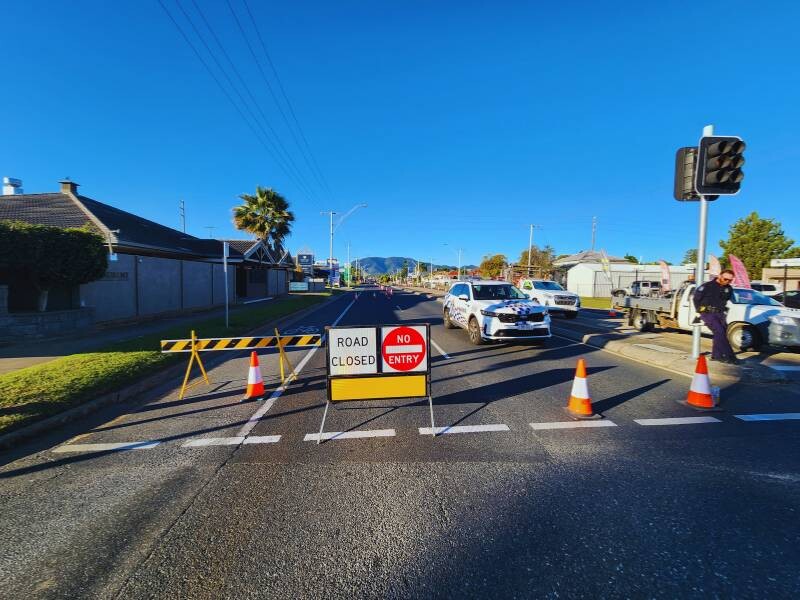Exploring the Essential Roles in a Traffic Control Team
Traffic control is an essential part of maintaining safety and order on our roads, especially during construction, maintenance, or large events. While it might seem straightforward, traffic control involves a variety of roles, each crucial to ensuring that vehicles and pedestrians move safely and efficiently through or around worksites. This blog will explore the different roles within a traffic control team, providing insight into how these roles work together to keep our roads safe.
The Importance of a Traffic Control Team
Before diving into the specific roles, it’s essential to understand why a well-coordinated traffic control team is necessary. Traffic control teams are responsible for creating and maintaining a safe environment around work zones. They ensure that the flow of traffic is managed effectively, minimising the risk of accidents and disruptions. These teams are trained to handle a wide range of situations, from routine roadworks to emergency response scenarios.
Traffic Control Team Roles
Traffic Controller The most visible member of a traffic control team is the traffic controller, often seen holding the iconic Stop/Go sign. Traffic controllers are responsible for directing traffic flow around work zones, ensuring that vehicles move safely and efficiently. They must be vigilant, communicate clearly, and react quickly to changing conditions on the road. Traffic controllers also work closely with other team members to ensure that traffic management plans are executed correctly.
TMA (Truck-Mounted Attenuator) Driver The TMA driver operates a specialised vehicle designed to protect road workers and motorists. The TMA truck, equipped with a crash cushion, is positioned behind work zones to absorb the impact in case of a collision. The driver’s role is crucial in ensuring that the truck is in the correct position and remains alert to any potential hazards. TMA drivers often work during night shifts when visibility is lower, making their role even more critical.
Traffic Management Planner Before any work begins, a traffic management planner develops a detailed traffic management plan (TMP). This plan outlines how traffic will be controlled and managed during the project. It includes details on signage, road closures, detours, and the placement of traffic controllers and TMAs. Traffic management planners must have a thorough understanding of local traffic laws, road conditions, and the specific needs of the project. They work closely with local councils and road authorities to ensure compliance with regulations.
Team Leader/Supervisor The team leader or supervisor oversees the entire traffic control operation. They are responsible for coordinating all team members, ensuring that everyone understands their roles and responsibilities. The supervisor also liaises with project managers, clients, and authorities to address any issues that may arise. In addition, they conduct safety briefings, monitor the team’s performance, and ensure that all safety protocols are followed.
Signage Installer Signage installers are responsible for setting up and maintaining all the signs required for the traffic management plan. This role involves placing signs at the correct locations, ensuring they are visible and compliant with regulations. Signage installers must be familiar with the types of signs required for different situations, such as road closures, detours, and speed limit changes. They must also regularly inspect the signs to ensure they remain in good condition throughout the project.
Area Manager/Coordinator The area manager or coordinator plays a pivotal role in overseeing multiple traffic control teams within a specific geographic region. They are responsible for ensuring that all teams under their supervision are operating efficiently and in compliance with safety standards. The area manager also coordinates with local councils, clients, and other stakeholders to address any issues that may arise. This role requires strong leadership skills, a deep understanding of traffic management practices, and the ability to manage resources effectively across various sites. The area manager is also instrumental in handling logistics, ensuring that each site has the necessary equipment and personnel to carry out their tasks.
Final Word
The roles within a traffic control team are varied, but each one is crucial to the success of the operation. From the traffic controller directing vehicles to the TMA driver ensuring the safety of the work zone, every team member plays a part in keeping our roads safe. Understanding these roles highlights the complexity and importance of traffic control as a profession. Whether you’re a motorist passing through a work zone or someone considering a career in traffic control, recognising the dedication and skill involved in these roles gives you a greater appreciation for the work that goes into maintaining road safety.
FAQs
What qualifications do I need to become a traffic controller? You will need to complete a traffic control training course and obtain a traffic controller licence in your state or territory.
What is a TMA driver, and why are they important? A TMA driver operates a truck-mounted attenuator, which is essential for protecting work zones and workers from collisions.
How do I become a traffic management planner? Becoming a traffic management planner typically requires experience in traffic control and additional qualifications in traffic management and planning.
What is the role of an area manager/coordinator in traffic control? An area manager oversees multiple traffic control teams within a specific region, ensuring compliance with safety standards and coordinating resources effectively.
Why is signage installation so important in traffic control? Proper signage ensures that motorists and pedestrians are aware of the traffic management plan, helping to prevent accidents and maintain the smooth flow of traffic.





